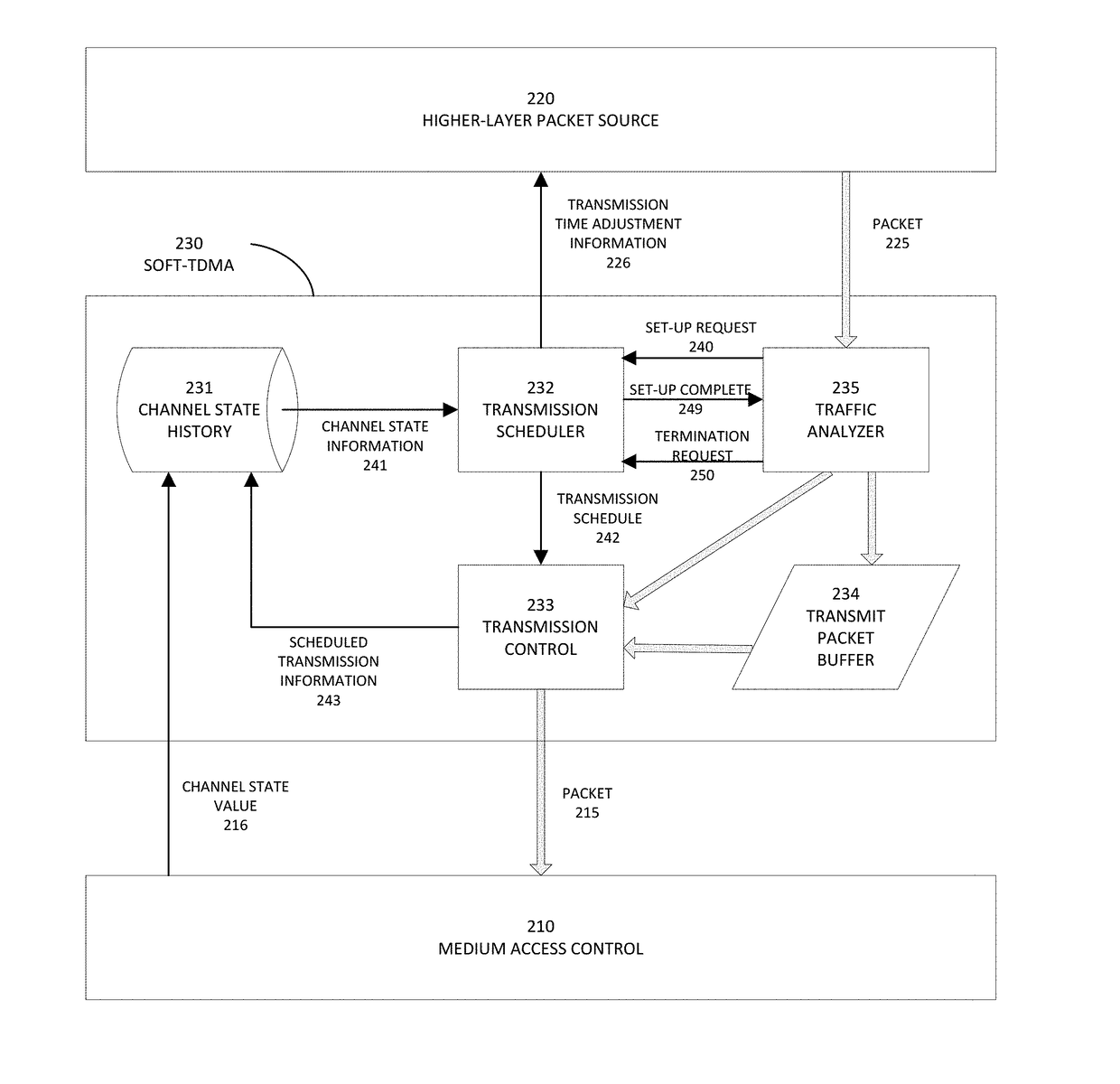Soft-TDMA for wireless ad-hoc networks
a wireless ad-hoc network and soft-tdma technology, applied in the field of wireless ad-hoc networks, can solve the problems of not improving the achievable network throughput, and achieve the effect of minimizing contention
- Summary
- Abstract
- Description
- Claims
- Application Information
AI Technical Summary
Benefits of technology
Problems solved by technology
Method used
Image
Examples
Embodiment Construction
[0023]The descriptions and features disclosed herein, and in the accompanying documents, can be applied to various communication systems, including wireline and wireless technologies. Such communication systems may be capacity-limited. For example, the features disclosed herein can be used with ad-hoc networks such as, for example, vehicular networks including Wireless Access for Vehicular Environments (WAVE) based on Dedicated Short-Range Communications (DSRC), infrastructure-based networks such as, for example, Cellular 2G, 3G, 4G (including Long Term Evolution (LTE), LTE Advanced, and WiMAX), cellular backhaul, Wi-Fi, Ultra Mobile Broadband (UMB), cable modem, and other point-to-point or point-to-multipoint wireline or wireless technologies. For concise exposition, various aspects are described using terminology and organization of particular technologies and standards. However, the features described herein are broadly applicable to other technologies and standards.
[0024]Embodim...
PUM
 Login to View More
Login to View More Abstract
Description
Claims
Application Information
 Login to View More
Login to View More - R&D
- Intellectual Property
- Life Sciences
- Materials
- Tech Scout
- Unparalleled Data Quality
- Higher Quality Content
- 60% Fewer Hallucinations
Browse by: Latest US Patents, China's latest patents, Technical Efficacy Thesaurus, Application Domain, Technology Topic, Popular Technical Reports.
© 2025 PatSnap. All rights reserved.Legal|Privacy policy|Modern Slavery Act Transparency Statement|Sitemap|About US| Contact US: help@patsnap.com

